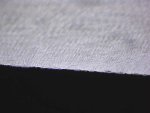It's not a bogeyman for scaring new straight shavers; it's a real thing and a sad waste of good steel. Edge trailing draws out the metal into the 'fin' or 'wire edge'. Depending on the hardness of the steel, it may be easy or difficult to produce, but when you have one you will know. A 10x handheld loupe will let you see all its ragged glory, and when you do see it, you understand that in use it will crumble, snap and start to cut and dig out divots of skin.
I can see why there might be some confusion. Twenty years ago we were taught that one never uses an edge-tailing stroke, and we scared to do it. But starting with circle strokes and then back-and-forth strokes, it has become obvious that as long as every edge-trailing stroke is matched with an edge-leading stroke, no wire edge builds up (caveats: very soft metal can misbehave , - buy a Pakistani razor and a loupe and see what I mean, and if you use different pressure for one direction compared to the other - say firm for trailing stroke, and light for leading stroke. Then you can still come to grief.) Another factor that means you don't hear about them so much is that the shaving world has moved on, both in terms of our hones, which tend to be of finer grit than 20 years ago ("Norton 4k/8k and done!"? Very few stop at 8k), and the use of barber hones and general carpentry hones has all but gone. A fine hone can still screw up an edge, but it takes a lot longer to do it. Plus we don't have to massive influx of enthusiastic newbies we once had, all keen to get it keen, and very prone to doing much more to an edge that was actually required.

